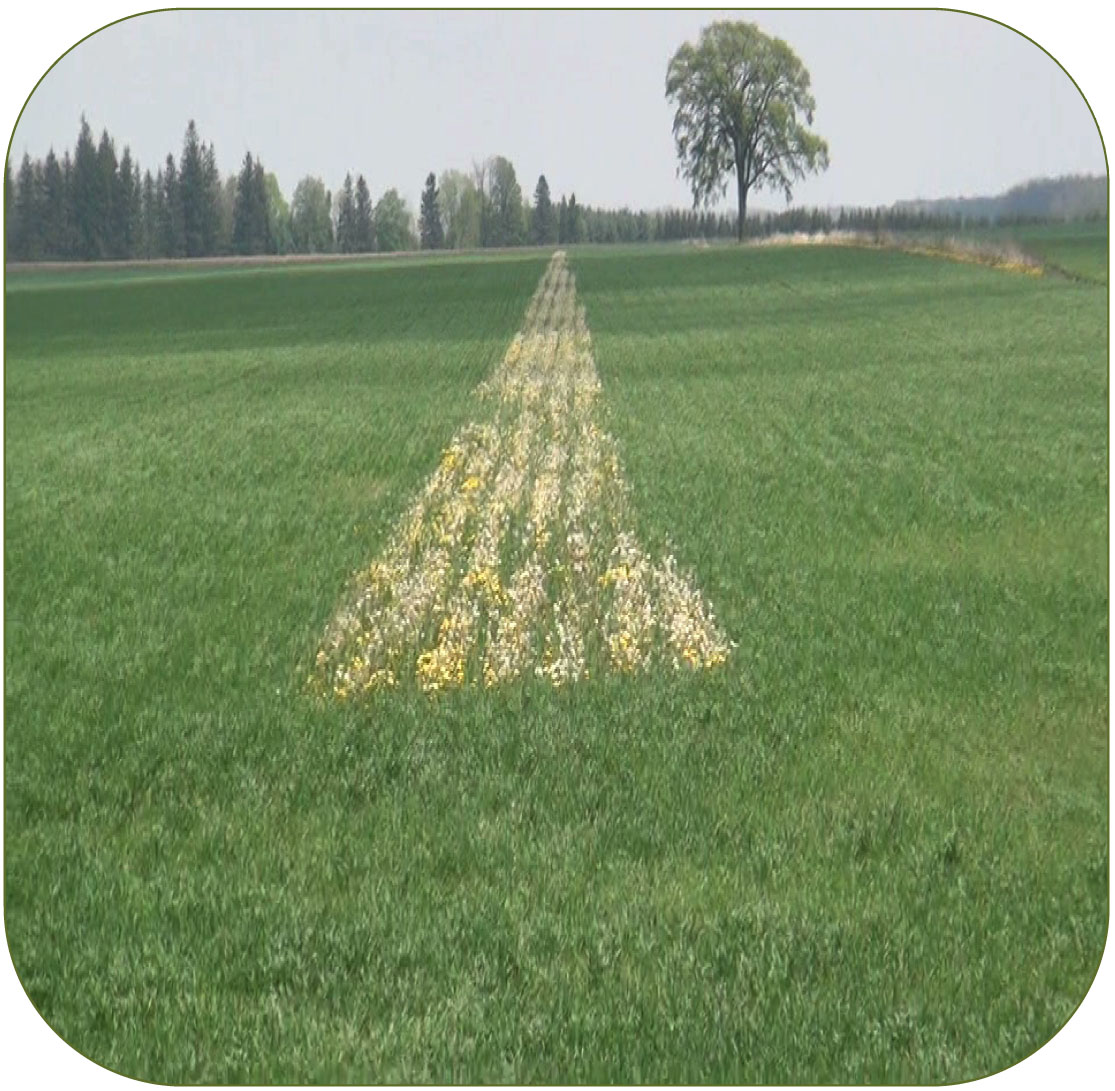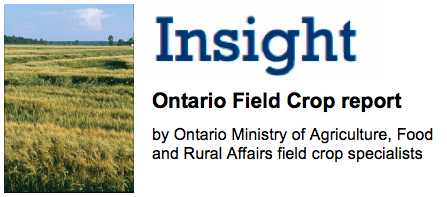Canola & Edible Beans: Brian Hall
Canola: Harvest is over 70% complete in southern areas and swathing is 50% complete in Northern areas. Yields have varied from 0.5 MT/ac to over 1 MT/ ac but have mainly been in the 0.7 to 0.9 MT/ac range. Quality has been good but seed size is small. The optimum time to swath is when 50-60% of the seed colour on the main stem has changed. However, in fields with uneven maturity, delaying swathing past this stage can improve yield if there is enough soil moisture to fill seeds. In these situations, swathing should start when the least mature seeds are firm and can be rolled between the thumb and finger. To reduce losses of mature seed, swath in the evening or morning when plants are dew covered. Canola is more prone to spoilage than cereal grains because of its high oil content and small seed size. To prevent spoilage, Canola that is being stored for even a short duration may require conditioning, especially if it contains weed and immature canola seeds or other extraneous material that can heat up seed.
Edible Beans: Yields have varied from 6 to 31 cwt/ac with 16-20 cwt/ac commonly reported. Quality is good on all market classes, seed size is small and seed moisture is already below 16% in some cases. When edible beans are below 16% moisture content, mechanical damage from handling increases. During harvest, monitor cracked seed coat damage as seed moisture content can decline quickly throughout the day. To evaluate seed coat damage, make a dilute solution of household bleach using one part bleach to 5 parts water and soak a bean sample for 5-10 minutes. Blot dry and count the number of damaged seeds. Seeds with damaged coats will take up moisture quickly and will appear swollen or have wrinkled seed coats. To calculate header or harvest losses, measure a 1 foot strip across the entire width of the header and count the number of seeds found. A harvest loss of 1 seed/ft2 in white or black beans (2,000 seeds/lbs) equates to a field loss of 22 lbs/ac.
Cereals: Peter Johnson
Planting wheat can start at anytime. If seeding in this early window reduce your normal seeding rate by 25%. Otherwise, seed at a rate of 1.5 million seeds/ac on medium to light textured soils and 1.8 million seeds/ac on heavy textured soils. Field experience has shown no yield increase to applying sulphur and nitrogen at seeding. If perennial weeds, particularly dandelion and winter annuals are prominent then controlling these prior to wheat emergence is the best time to control them.
 Left: A field of winter wheat in 2012 where the sprayer ran out of glyphosate prior to planting, leaving a thick strip of dandelions in the spring. Field experience has shown time and time again that dealing with perennials, especially dandelions, prior to planting winter wheat is much more effective then trying to control them in the spring. The damage to yield and stand establishment is greatly reduced by controlling these types of weeds with pre-plant glyphosate applications.
Left: A field of winter wheat in 2012 where the sprayer ran out of glyphosate prior to planting, leaving a thick strip of dandelions in the spring. Field experience has shown time and time again that dealing with perennials, especially dandelions, prior to planting winter wheat is much more effective then trying to control them in the spring. The damage to yield and stand establishment is greatly reduced by controlling these types of weeds with pre-plant glyphosate applications.
Soybean: Horst Bohner
August continued to be dry for most regions. Above average heat unit accumulation and dry conditions have sped up soybean maturity. Field maturity ranges from R7 (beginning maturity) to R8 (full maturity). A few early soybeans have already been harvested. If weather permits, significant acreage will be harvested during the month of September this year, which is generally two to three weeks ahead of normal. Top pods did not fill out as much as they could have with more soil moisture. Seed size is expected to be relatively small except in areas that received more rain. Pre-harvest herbicides may still be warranted as a harvest aid in weed fields. This will not speed up crop maturity, but does help dry down the crop and weeds more evenly, allowing timely harvest and reduced field losses. More information on pre harvest herbicide options can be found at: www.goo.gl/vxy8J.



